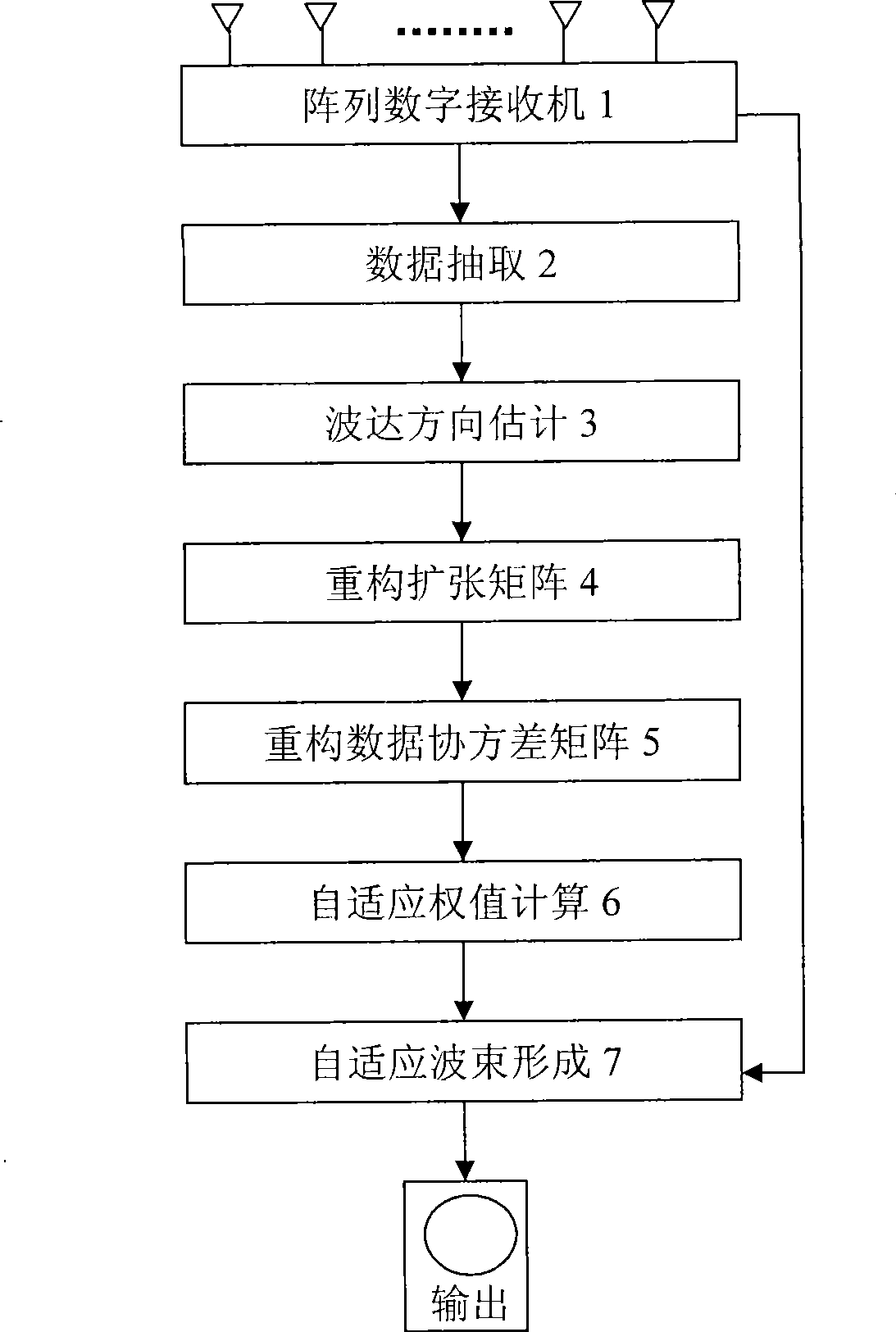Self-adapting special interference restraint technology for phased array radar
A technology of phased array radar and jamming technology, applied to radio wave measurement systems, instruments, etc., can solve problems such as adaptive algorithm failure, low sidelobe, and consumption of space degrees of freedom
- Summary
- Abstract
- Description
- Claims
- Application Information
AI Technical Summary
Problems solved by technology
Method used
Image
Examples
Embodiment Construction
[0041] The principle of implementing the present invention is as follows: first, the number of interference sources and the parameter estimation are carried out by using the array receiving data, and then the expansion matrix and the interference data covariance matrix are formed by using these information, and finally an adaptive weight with certain null depth and null width is formed. , and finally use this adaptive weight to perform adaptive beamforming on the data received by the array, so as to realize the suppression of complex interference.
[0042] Assuming that the phased array radar has M array elements and N interferences, M=64 and N=2 in the embodiment, and the angles of interference are respectively θ J1 , θ J2 . Describe the detailed steps of the whole invention below in conjunction with accompanying drawing and embodiment:
[0043] (1) The received data of the M array element channels is stored in the system by the array digital receiver unit 1, which requires...
PUM
 Login to View More
Login to View More Abstract
Description
Claims
Application Information
 Login to View More
Login to View More - R&D
- Intellectual Property
- Life Sciences
- Materials
- Tech Scout
- Unparalleled Data Quality
- Higher Quality Content
- 60% Fewer Hallucinations
Browse by: Latest US Patents, China's latest patents, Technical Efficacy Thesaurus, Application Domain, Technology Topic, Popular Technical Reports.
© 2025 PatSnap. All rights reserved.Legal|Privacy policy|Modern Slavery Act Transparency Statement|Sitemap|About US| Contact US: help@patsnap.com



